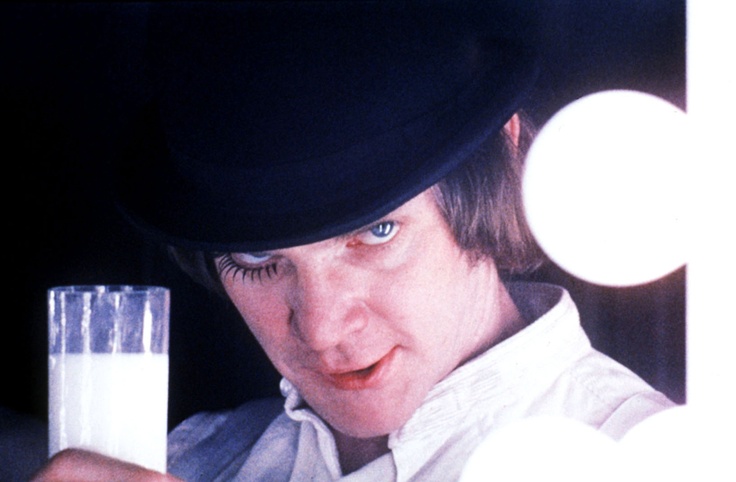by Luke Parker, staff writer
Stanley Kubrick’s A Clockwork Orange is, like so many of Kubrick’s films, a warning; it throws a mirror in the audience’s face and says “This is what our society is coming to! Unless you find a way to change it.” A deeply ideological, visually stunning work of art, Clockwork Orange is set in the near future, and attempts to warn the world of an oncoming doom. A doom that takes the form of our “humble narrator,” Alex.
After a series of disturbingly ultraviolent shenanigans with his droogs (friends), Alex is betrayed and is arrested for murder. With a couple years of hard time under his belt and many more to come, Alex has his eyes set on leaving anyway he can. When a new experiment, which would exempt him of his jail time, shows up, Alex doesn’t hesitate to volunteer. And after rigorous tests, Alex is sent back into the dystopian society, with the shadow of his past life still following him.
Alex’s character is one of darkness and complexity. He is the type of guy you’d create space between when walking past him on the sidewalk, and refuse to look back at him in fear that he is staring back at you. And yet, he admires Beethoven and the power of classical music. For the first half of the film, he is pure evil; he’s a killer, a rapist, a villain. Later, he is converted to purified evil, forced to conform to the society that created him. But if he were physically able to continue his sadistic behavior, he would. And somehow, Malcolm McDowell’s portrayal of Alex leaves the viewer with an uncontrollable feeling of pity. Pity that no rapist deserves.
The film is incredibly dark. Based on the novel by Anthony Burgess, it places a large emphasis on the more disturbing aspects of society. It’s focus on crime, corruption, and irony makes for an upsetting series of realizations. And ever since it’s release with an X rating, A Clockwork Orange has been subject to controversy.
A Clockwork Orange is also exceedingly graphic, and its sense of realism is unmatched by most other films. But it’s not as if Kubrick stemmed the movie’s more unsettling sequences from his own mind; rapes, murders, and inhumane experiments all happen in the real world, and I commend the film’s bravery for sticking to the truth.
Another point of praise is the way Clockwork Orange is filmed. It’s unique use of music, fast cuts, and wide-angle lens create a futuristic-feeling on the screen. And in near-future science fiction, it is important that the audience can see that the story is set in the future. Even from the opening shot of Alex’s face slowly panning back to reveal the Korova Milk Bar, there is a sense of separation between Alex’s world and the viewer’s.
A Clockwork Orange is undoubtedly not only a Kubrick classic, but a cinematic classic. If you are able to look past the film’s vulgar and disturbing scenes, and understand its messages, Alex and his story will stand out in your mind as a complicated and mesmerizing marvel.

